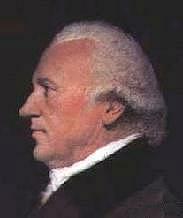William Herschel and Trees on the Moon May 23, 2011
Author: Beach Combing | in : Modern , trackbackBorn in Hanover, but living in Britain for most of his adult life, William Herschel (obit 1822) was a celebrated astronomer in the century after Newton. WH has crossed Beachcombing’s radar not just because of his great achievements – discovery of Uranus etc – but because of some of his more curious speculations. For centuries, scholars, thinkers and theologians had wondered aloud whether there were not other worlds and even other inhabitants on other worlds: Beachcombing has looked at some of this waffle in previous posts. But Herschel claimed – and he was perhaps the first to do so? – to have spied life through a telescope: Herschel it should be noted was not just a brilliant astronomer but also a brilliant telescope builder.
This evening I tried a new ten foot reflector on the Moon with a power of 240. The moment I saw the Moon I was struck with the appearance of something that I had never observed before, which I ascribed to the power and distinctness of my instrument, but which may perhaps be an optical fallacy. But in the first place I will argue and describe the phenomena, as if those appearances I saw had been founded upon reality. I believed to perceive some thing which I immediately took to be growing substances, I will not call them trees as from their size they can hardly come under that denomination, or if I do, it must be understood in that extended signification so as to take in any size how great soever. The Moon was gibbous, being 12 days old, also in and near the meridian; and the air very fine. My attention was chiefly directed to Mare humorum, and this I now believe to be a forest, the word being also taken in its proper extended significance as consisting of such large growing substances.
WH sketches a brief figure in his notebook here and describes it as a
‘wood which goes up to Mount Gassendus. The different Colours of the plain ground, of the rocks and of the shadown cast by high places are easily to be distinguished on the Moon. It has hitherto been supposed that those seas as they are called consisted of a different kind of soil, which reflected light less copiously than the hills and mountains.’
One can sense, as in much of his work, Herschel’s excitement here. This was, after all, the man whose enthusiasm was such that his sister Caroline claimed he only ever slept when there was cloudcover or overbright moonlight. Herschel rounds off by modestly noting that his findings need to be confirmed and then reflects on these trees’ likely size.
‘Our tallest trees would vanish at that distance. It is not impossible but that the vegetable creation (and indeed the animal too) may be of a much larger size on the Moon than it is here, tho perhaps not very likely. And I suppose that the borders of the forest, to be visible, would require trees at least 4, 5 or 6 times the height of ours. But the thought of forests, or lawn or pastures still remains exceedingly probable with me, as that will much better account for the different colours, than different colour’d soils can do’.
Interestingly, the cautious Herschel never published these findings, though he did later scribble in his notebooks about the existence of pyramids and even cities on the moon. Again to the best of Beachcombing’s knowledge Herschel is one of the first modern astronomers to have claimed – however privately – to have seen life through a lens: drbeachcombing AT yahoo DOT com A rather less melodramatic version of previous Beachcombing posts on vegetation on Mars, Lowell’s canals, the New York bat men and Fort’s claims for synchronized swimming on the moon. Herschel’s public utterances were limited to ideas about what life might be like on other planets in our solar system – and the sun! – an interesting if quite different thing.



